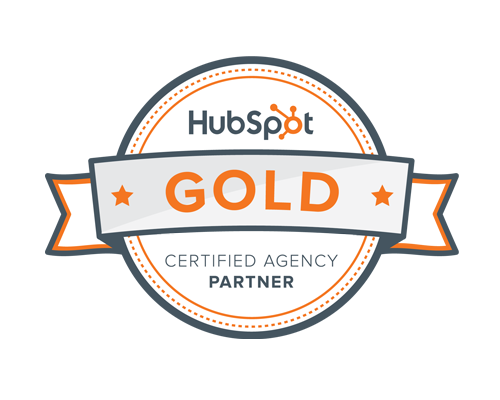
The Role of Content Curation in Inbound Marketing: How to Curate with Purpose
The Role of Content Curation in Inbound Marketing: How to Curate with Purpose
In an era when audience segmentation and personalized, highly targeted ads are all the rage, it’s easy to overlook the value of a solid inbound marketing strategy for both your brand and your sales funnel.
With 71% of B2B buyers consuming blog content during their buyer journey, the data backs it up—content is a critical part of the equation when aiming to connect with your audience and represent a knowledgeable source your customers can trust.
As you develop and adapt your inbound marketing plans, sharing content is one of the easiest ways to engage your customers authentically. Curating content thoughtfully involves posting relevant content from various sources to establish credibility, foster community, and drive organic traffic.
The team at Möve manages SEO-driven content marketing strategies for our clients. Whether you’re a seasoned digital marketer or looking for extra support, we can help transform your content marketing strategy and improve the efficacy of your inbound marketing approach.
In this blog, we’ll break down how intentionally curated content helps you attract customers and sustain long-term relationships. Keep reading to learn more about curating content that converts.
The Role of Content in Inbound Marketing
Falling under the umbrella of your digital marketing initiatives, inbound marketing is a customer-centric approach intended to attract and engage your customers with a relevant content marketing strategy. Instead of reaching out with promotional materials and ads, inbound marketing draws your audience in naturally through owned channels including your website and social media.
Your content marketing strategy lies at the heart of your inbound marketing activities and intertwines with your SEO efforts. While organic content channels typically do not offer the targeting capabilities of your paid campaigns, you can curate tailored content and experiences that resonate with your audience’s needs and preferences—that’s where SEO comes in.
In the past, many companies focused on getting as many clicks as possible. Today, marketers understand the importance of delivering content that matches the user’s intent in viewing it, whether they need to answer a question or solve a problem. The guiding principles of SEO and content strategy emphasize attracting not just any audience, but the right one.
Rather than chasing fleeting metrics, your content marketing strategy needs to deliver meaningful, actionable solutions to user queries. This shift underscores the benefits of retaining customers by establishing trust and positioning the brand as a reliable source of information.
In essence, the synergy between content marketing strategies and inbound marketing isn't just about driving traffic or generating leads. It's about fostering enduring relationships built on trust, relevance, and value. By addressing customer needs with informative, interesting content, brands can solidify their authority and lay the groundwork for sustainable growth.
What is Content Curation?
Content curation is a pivotal stage of the content process. It draws on marketing objectives, SEO strategies, varying content formats, and purposeful themes, resulting in a cohesive content plan.
You already know you need to share content. But where do you begin?
We recommend starting with your audience. What solutions do they want and what do they search for? Examine your SEO strategy to find topics and keywords your customers care about so you can help them make more informed decisions. We find it’s a good idea to outline the topics and themes you intend to explore, ensuring that each piece of content is driven by data and serves a purpose in your overarching strategy.
Next, look at your channels. You wouldn’t post the same content to your blog as your TikTok account. As you plan content, designate what goes where to stay consistent with user expectations across platforms.
Types of Content
To keep your audience interested and entertained, you should choose a variety of formats. Here are some examples:
Blog Posts: Informative articles written to educate, entertain, or inspire audiences.
Videos: Engaging visual content that can include tutorials, vlogs, or product demonstrations.
Infographics: Visual representations of data or information designed to be shareable and easily digested.
Podcasts: Audio recordings featuring interviews, discussions, or expert insights.
Social Media Posts: Content shared on social media platforms like TikTok, Instagram, Twitter, and LinkedIn, including text, images, videos, and links.
Whitepapers/eBooks: In-depth documents providing valuable insights, research findings, or solutions to specific problems.
Case Studies: Detailed examinations of how a product or service solved a particular problem or achieved specific results for a customer.
As you dive into these content categories, you should still consider the overall tone and angle of the materials you share. Thought leadership pieces establish your authority and expertise with your unique and innovative ideas while product-led content is designed to highlight the specific features, benefits, and value propositions of your products and services.
The synthesis of goals, SEO insights, content formats, and thematic direction lays the groundwork for compelling, purpose-driven content that captivates and engages our audience.
How to Curate Content Your Audience Needs
Companies with blogs produce 67% more monthly leads on average than companies that don’t blog, but that doesn’t mean it’s enough just to have one. With carefully curated content aligned with your SEO and inbound marketing strategy, you can really make an impact on lead generation.
All of the following techniques have their pros and cons, so it’s a good idea to use them together for a holistic approach to content curation.
Artificial Intelligence: AI tools are a great place to start, especially if you just need to generate ideas. AI can leverage advanced algorithms to analyze data and trends, making it a valuable resource when you need to come up with new topics, titles, and variations as part of your content curation. These tools can identify relevant themes, popular topics, and engaging headlines, enabling content curators to stay ahead of the curve and deliver content that resonates with their audience's interests and preferences.
Search Engines: Search engines are a powerful and accessible tool in your content curation arsenal. Given your content needs to match your user’s search intent, you can explore some common questions yourself and discover what else your audience is actively searching for on that topic. You just might be surprised by what your customers really want to know.
Keyword Research: Keyword research enables content curators to identify relevant terms and phrases used by their target audience and competitors. Keywords guide the planning and curation process to ensure your content resonates with user search intent and simultaneously maximizes visibility in search engine results, boosting your brand and making it easier for customers to find your content. You can even evaluate your paid search campaigns to find inspiration.
The Benefits of Curated Content
Ideally, curated content enhances your inbound marketing efforts. By fulfilling a content marketing strategy built around carefully selecting and organizing valuable content, companies can reap the following benefits:
- Showcase industry expertise and thought leadership
- Improve SEO
- Increase website traffic and engagement
- Generate leads
- Foster trust among consumers
- Stay up to date with industry trends
- Provide diverse perspectives and insights for a richer experience
Final Thoughts
A content marketing strategy with carefully curated content benefits your overall inbound marketing metrics by increasing brand visibility, bringing in leads, and showcasing your expertise. We suggest putting your audience’s needs first, as it leads to optimized content and stronger website performance in search rankings.
Here at Möve, we can handle your content curation, keyword research, blogs, social media, and more. Need a marketing partner committed to impactful results?
Get in touch with us to see what Möve can do for your business.




